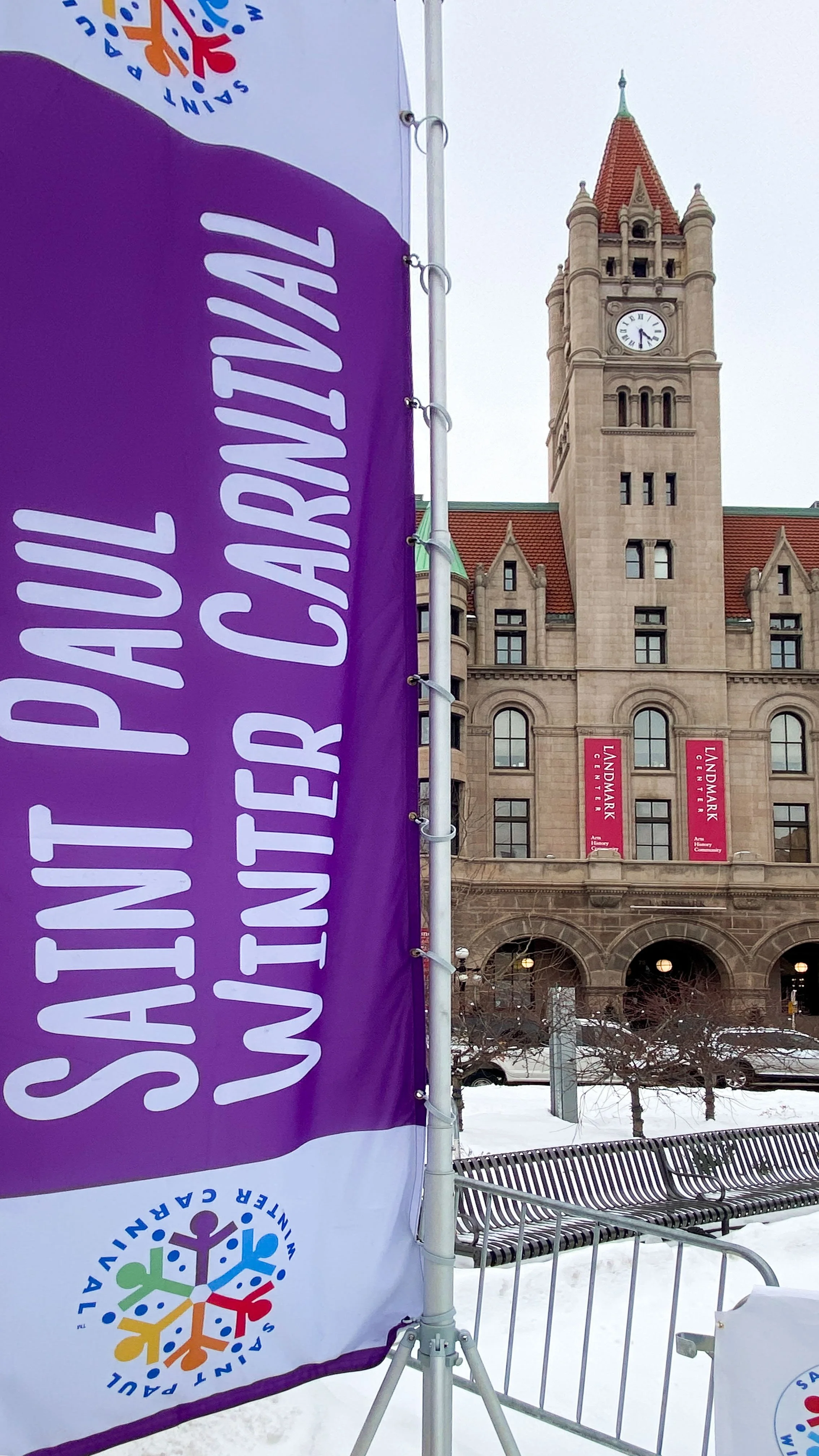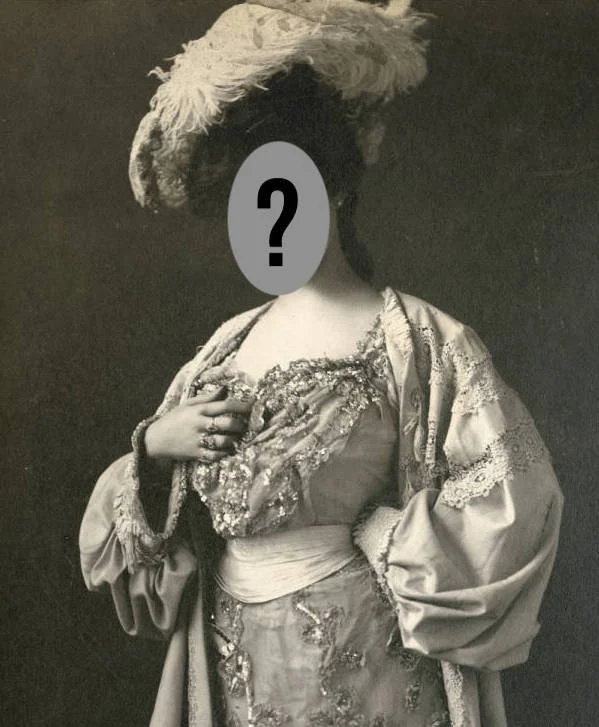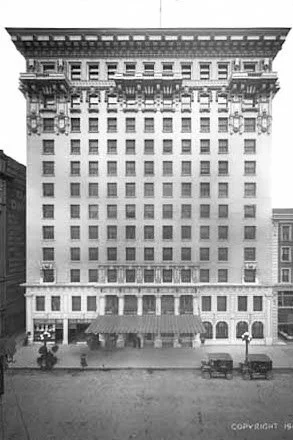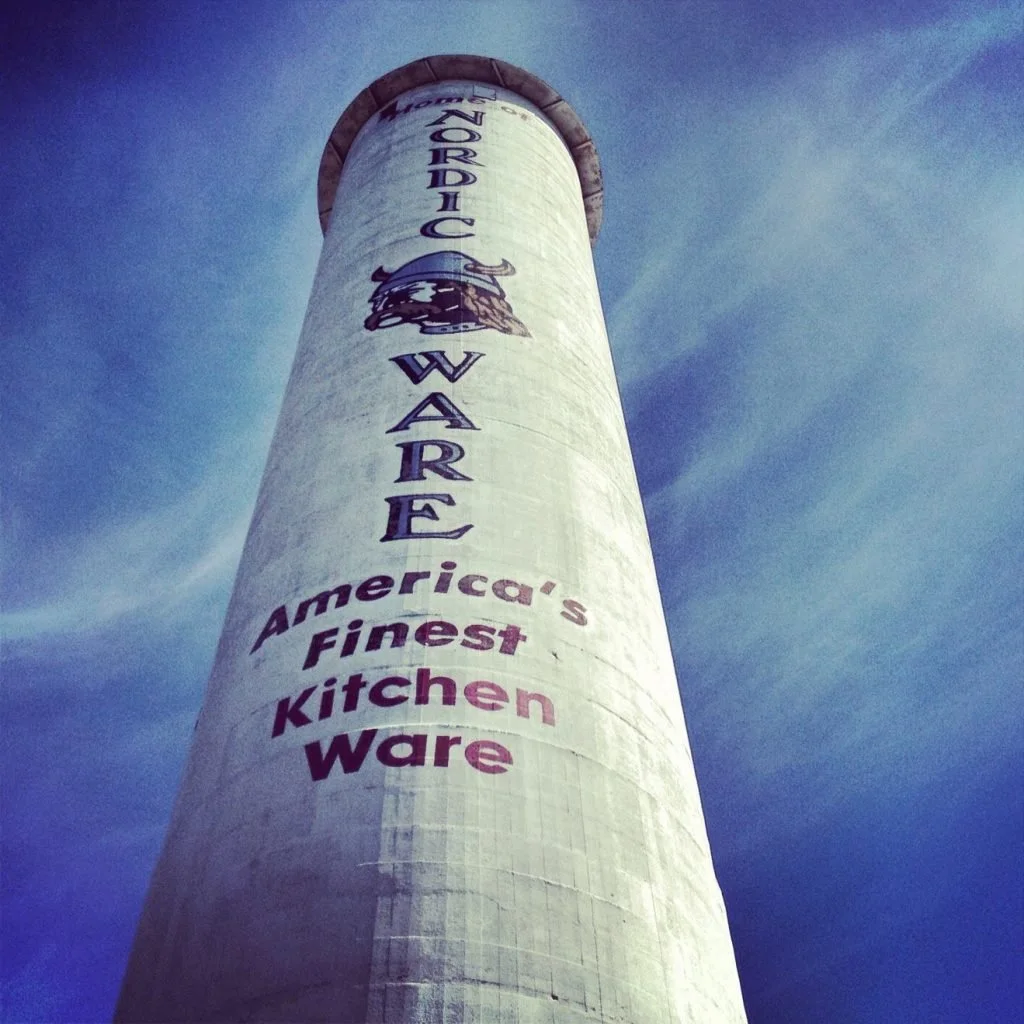The First Saint Paul Winter Carnival
The Saint Paul Winter Carnival is getting underway this weekend and events are popping up all over the city. The Vulcan Snow Stomp is prepping for the snow sculpture contests and the Treasure Hunt clues are being analyzed. The Winter King Boreas has dumped an abundance of snow all around yet blessed us the typical chilly temperatures to provide the perfect stage for all of the ice and snow sculptures.
This will be the Carnival’s 137th year, making it the oldest Winter Carnival in the country. There have been missed years - for weather, wars, the Depression and just plain lack of interest - but every year of its return, the Carnival evolves and provides new twists on Winter entertainment for the hardy Minnesotans who refuse to just “hunker down” because of a little cold weather.
Oh no he didn’t!
Headlines announce the start of the 1st Saint Paul Winter Carnival - Saint Paul Globe
It was that Minnesota spirit that started the whole thing in the first place. In 1885, some unimaginative journalist from the East Coast had the nerve to describe Minnesota as “uninhabitable” and compared the state to Siberia. These were fighting words, not only to our pride but to our pocketbooks. Entrepreneurs and industrialists (especially James J. Hill) were working hard to attract settlers and workers to the new state and weren’t willing to take the financial hit of a bad reputation.
Apparently the characteristic Minnesotan passive-aggressive nature was already well developed because city leaders took quick action to put the naysayers in their place. Carnivals and festivals were already popping up around the states. World’s Fairs (Philadelphia in 1876, New Orleans in 1885) had already proven successful opportunities for tourism and attracting new businesses. Montreal had seen enormous success with their Winter Carnivals and seemed the perfect prototype to follow.
The 1884 Montreal Ice Palace - Library of Congress
In 1886, Montreal was struggling through an outbreak of smallpox and were making plans to scale back their celebrations. This left the Canadian Ice Palace architects out in the cold. The Saint Paul planners seized the opportunity and lured them to the states instead. Hutchinson & Bro would be able to build their Ice Palace after all.
The 1886 Saint Paul Winter Carnival Ice Palace - Saint Paul Globe
Their castle was big, even by today’s standards. At almost 8 stories tall and covering nearly half a football field, it was strong competition for the largest building in the capital city. Thirty-five thousand ice blocks were brought in from the state’s rivers and lakes to build the walls that varied from 20-40 inches thick. The interior was lit with a network of gas stoves and lanterns to make it glow in a variety of colors. While more recent palaces are only able to be enjoyed from the outside, the early palace was built so sturdily that a variety of rooms were available to host events and King Borealis’ troops, when tasked with defending the castle, were able to climb into the turrets to return fire.
This first Winter Carnival was vastly different from the festival we know today in lots of other ways. The majority of Minnesotans in attendance had firsthand experience with warfare - either in the Dakota War or the Civil War. Most transportation was done by horse and carriage, but trains were steaming their way across the frontier. Light was provided by gas lamps and very few homes had such conveniences. A group of Dakota Sioux attended the festivities, building their teepees in the shadow of the Ice Palace. The entire state population in 1886 was around 1.7 million - about half the population of just the Twin Cities today. A spectacle of this kind was completely unfamiliar, but Minnesotans welcomed it with gusto.
From survival to sport
They were also unfamiliar with the idea of winter activities for “fun”. Minnesota’s native population and early settlers were well acquainted with the concept of outdoor winter activity, but snowshoeing was necessary for survival and cross country skiing was a means of transportation. Driving a team of horses over snowy fields and icy rivers was all in a day’s work. It was only in the decades leading up to the 1886 Carnival that these activities evolved into a playful pastime and organized into “sport”.
The toboggan slide on Ramsey Hill, 1886
Curling, skiing, skating and sledding were added to the mix and Minnesotans took to them like fish to water. Young men and women became adrenaline junkies as entire streets were shut down and multi-story wooden structures were built to create enormous toboggan slides. Riders competed in teams to see who could travel the farthest the fastest and would reach speeds of up to 40 miles per hour. Officials had to carefully monitor the slides to avoid bone-breaking crashes. Sawdust had to be added to slow down hapless riders who couldn’t brake, but nothing could dissuade the teams from competing for citywide bragging rights.
It was these teams, sponsored by local businesses and clad in distinctive woolen blanket suits, that would make up the forces required to defend the Ice Palace against the onslaught made by the Fire King.
The Daily Globe team marches in the Grande Day Parade of 1886 - Saint Paul Globe
In its first year, the Carnival had yet to develop its full Legend or fill out the Royal Family tree. Only King Borealis Rex (who would become King Boreas in later years) was accompanied by a nameless Queen of Snows to face off against Fire King Coal (before he later evolved as Ignis Rex, Vulcan Rex, then Vulcanus Rex). Their territorial fight for the Ice Palace, and metaphorical fight over the changing of the seasons, has become the culminating event of present-day Winter Carnivals and performed with good humor and a bit of silliness, but in this first year the Carnival organizers presented a very different set of events.
Whose side are you on?
Perhaps the organizers of the first Carnival just wanted to get as much “bang for their buck” as they could out of the Ice Palace, but instead of just one battle for the Palace they staged two. About one week into the Carnival, the Fire King (portrayed by Delos Monfort, President of the Second National Bank) gathered his troops to try to force the King of Snows (portrayed by General Richard W. Johnson) out of his icy refuge.
First, King Borealis Rex led his loyal followers - thousands of members of the city’s sports and business clubs - into the palace. Soon, Fire King Coal arrived with torches and troops to try to steal control from his chilly nemesis. Unlike today, where snow and ice symbolically give way to warmth and summer, this time the Fire King was turned away. He and his supporters skulked off into the night so that the Winter Carnival could continue.
That seems a bit aggressive
A few days later, a second assault was mounted against the King of Snows - and I do mean ASSAULT. Instead of athletes and businessmen dressed in blanket coats and silly hats, the Palace was attacked by REAL SOLDIERS. Four thousand members of the G.A.R., veterans of the Union Army who fought in the Civil War just 20 years prior, were organized to attack. In uniform, in military formation, and using military tactics, the troops fired barrages of Roman candles at the walls. Muskets and cannons were used to fire blanks that rattled the air with their percussions. From inside, King Borealis’s regiments returned literal fire sending down streaming fireworks to the people below. For over 30 minutes, the Ice Palace was ablaze until the Union troops burst their way through the doors and forced the King to surrender.
After successfully routing the forces of Winter, the troops paraded their way through the city for the thankful crowds remembering perhaps the days when they paraded the streets after a much more real and brutal battle.
Lets keep this party going
The Winter Carnival of 1886 was an enormous success. Organizers scrambled to extend the events through the end of February, coming up with more and more amusements to keep people engaged and keep the tourism money coming into the city coffers. Even after the official end of the Carnival, the organizers opened up the palace grounds, the toboggan slides and skating rinks to free admission. They even let the Ice Palace remain by the Capital, gradually melting until it was reported officially gone in April. They just didn’t want the enjoyment to end.
There was no doubt in 1886 that a second Winter Carnival would be staged the following year and that a tradition was in the making. Not only did the general public have a fantastic time, but the events actually turned a profit - something that would not happen in many of the future years. While the first Carnival was one of a kind, the assembling of the G.A.R. Veterans would not happen again, its spirit has remained the same. Minnesotans will seize any opportunity to prove that we are made of some tough stuff, enjoy a good joke, brazenly flout the rules of winter survival and safety, but are still soft at heart and welcoming to any stout visitor wanting to join in the winter fun.












